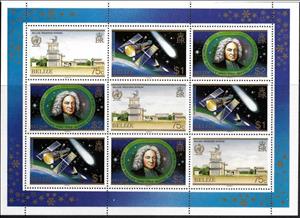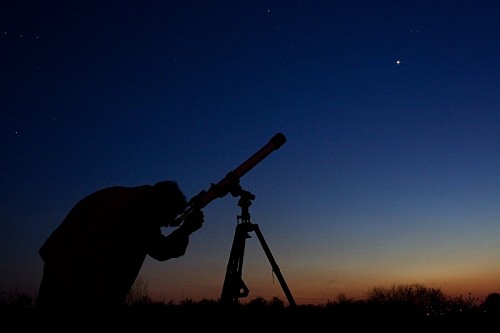Mini Sheet: Appearance of Halley's Comet Mini Sheet 2 (Belize 1986)
Appearance of Halley's Comet Mini Sheet 2 (Belize 1986)
30 April (Belize ) within release Appearance of Halley's Comet goes into circulation Mini Sheet Appearance of Halley's Comet Mini Sheet 2 face value 11.25 Belize dollar
| Mini Sheet Appearance of Halley's Comet Mini Sheet 2 in catalogues | |
|---|---|
| Stanley Gibbons: | Sg: BZ 913a |
Mini Sheet is square format.
Contains 3 stamps from the series. Buyer beware - genuine examples exist with the black printing omitted from stock dispersed by the liquidator of Format International Security Printers Ltd (very rare). However, a large number of forgeries exist which were all created after the printing company was dissolved in 1990. If purchasing, only buy from a reliable dealer after close inspection.Also in the issue Appearance of Halley's Comet:
- Mini Sheet - Appearance of Halley's Comet Mini Sheet 1 face value 2.25;
- Mini Sheet - Appearance of Halley's Comet Mini Sheet 2 face value 11.25;
- Stamp - Appearance of Halley's Comet face value 4;
Mini Sheet Appearance of Halley's Comet Mini Sheet 2 it reflects the thematic directions:
An astronomer is a scientist in the field of astronomy who focuses their studies on a specific question or field outside the scope of Earth. They observe astronomical objects such as stars, planets, moons, comets and galaxies – in either observational (by analyzing the data) or theoretical astronomy. Examples of topics or fields astronomers study include planetary science, solar astronomy, the origin or evolution of stars, or the formation of galaxies. A related but distinct subject is physical cosmology, which studies the Universe as a whole
A building or edifice is a structure with a roof and walls standing more or less permanently in one place, such as a house or factory. Buildings come in a variety of sizes, shapes and functions, and have been adapted throughout history for a wide number of factors, from building materials available, to weather conditions, to land prices, ground conditions, specific uses and aesthetic reasons. Buildings serve several needs of society – primarily as shelter from weather, security, living space, privacy, to store belongings, and to comfortably live and work. A building as a shelter represents a physical division of the human habitat (a place of comfort and safety) and the outside (a place that at times may be harsh and harmful).
A comet is an icy, small Solar System body that warms and begins to release gases when passing close to the Sun, a process called outgassing. This produces an extended, gravitationally unbound atmosphere or coma surrounding the nucleus, and sometimes a tail of gas and dust gas blown out from the coma. These phenomena are due to the effects of solar radiation and the outstreaming solar wind plasma acting upon the nucleus of the comet. Comet nuclei range from a few hundred meters to tens of kilometers across and are composed of loose collections of ice, dust, and small rocky particles. The coma may be up to 15 times Earth's diameter, while the tail may stretch beyond one astronomical unit. If sufficiently close and bright, a comet may be seen from Earth without the aid of a telescope and can subtend an arc of up to 30° (60 Moons) across the sky. Comets have been observed and recorded since ancient times by many cultures and religions.
Famous People refers to the fame and public attention accorded by the mass media to individuals or groups or, occasionally, animals, but is usually applied to the persons or groups of people (celebrity couples, families, etc.) themselves who receive such a status of fame and attention. Celebrity status is often associated with wealth (commonly referred to as fame and fortune), while fame often provides opportunities to make money.
A man is an adult male human. Prior to adulthood, a male human is referred to as a boy (a male child or adolescent).
Outer space (or simply space) is the expanse that exists beyond Earth's atmosphere and between celestial bodies. It contains ultra-low levels of particle densities, constituting a near-perfect vacuum of predominantly hydrogen and helium plasma, permeated by electromagnetic radiation, cosmic rays, neutrinos, magnetic fields and dust. The baseline temperature of outer space, as set by the background radiation from the Big Bang, is 2.7 kelvins (−270 °C; −455 °F)
A spacecraft is a vehicle that is designed to fly and operate in outer space. Spacecraft are used for a variety of purposes, including communications, Earth observation, meteorology, navigation, space colonization, planetary exploration, and transportation of humans and cargo. All spacecraft except single-stage-to-orbit vehicles cannot get into space on their own, and require a launch vehicle (carrier rocket).








